Goodbye to the fluorescent tubes.
As of August 24, 2023 commonly used light sources may no longer be produced on the European market. The light sources must be phased out according to EU regulations and is based on the decision in the Ecodesign Directive to end the mercury exemption for light sources previously included in the RoHS Directive. For many, it means change, but a great one! To exchange conventional fluorescent tubes for high-quality LED means increased energy savings and an improved light environment.
What does the phase-out mean and what is affected?
The phasing-out requirement means, among other things, that conventional and compact fluorescent lamps may no longer be produced on the European market. The commonly used T8 and T5 fluorescent lamps as well as compact fluorescent lamps (CLF) are examples of light sources that are affected.
Products that are already installed or stocked may continue to be used and wholesalers may sell out their current stock. If you own or use lighting installations that currently use one of these light sources, it is important to consider long-term solutions, since the products will not be available in the future.
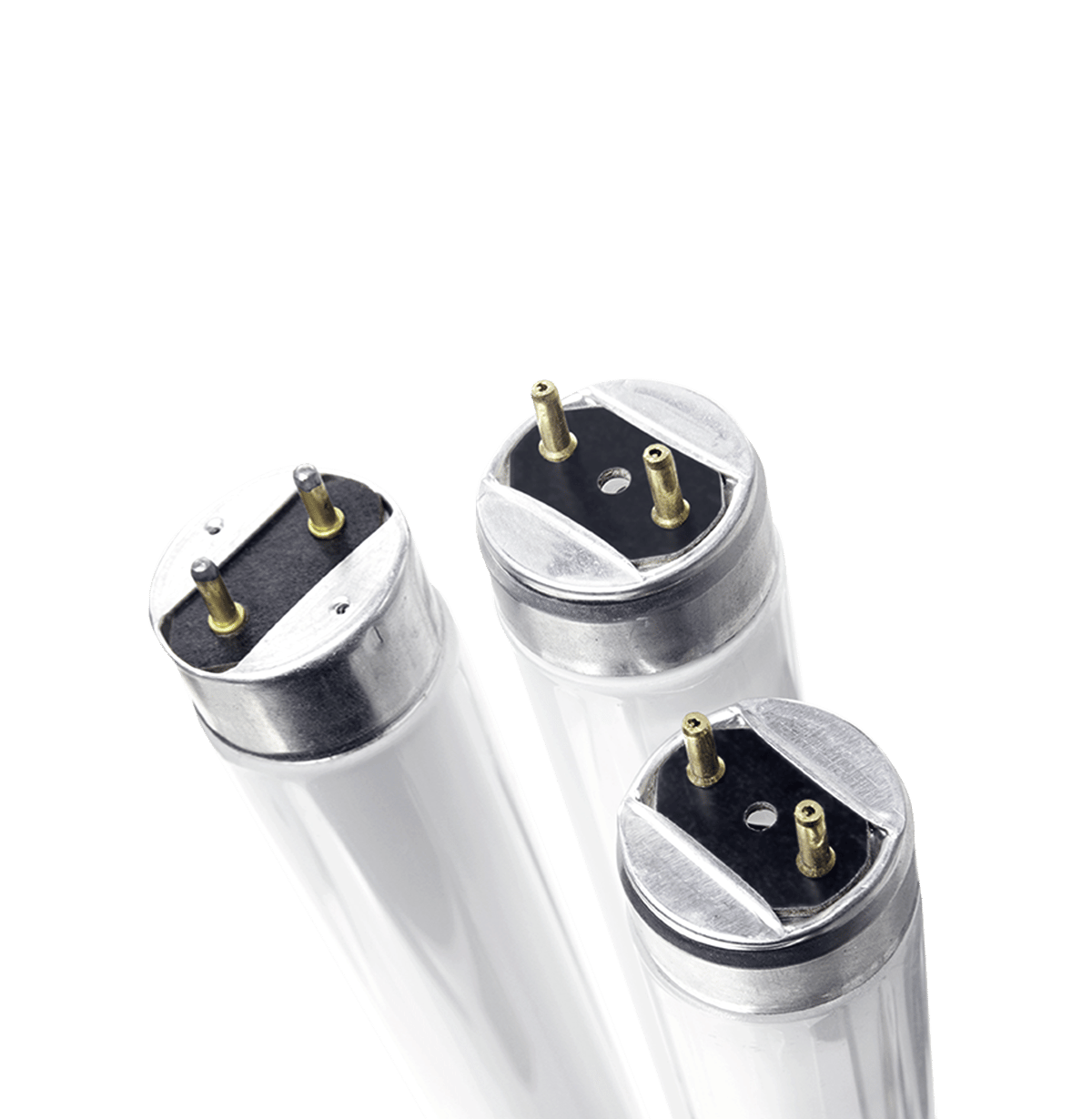
190 billion TWh and mercury reduction of approx. 1.8 tonnes
Two sustainable options for your lighting installation
The choice between purchasing brand-new luminaires or reusing existing ones is a big part of the journey towards more efficient and future-proof lighting.
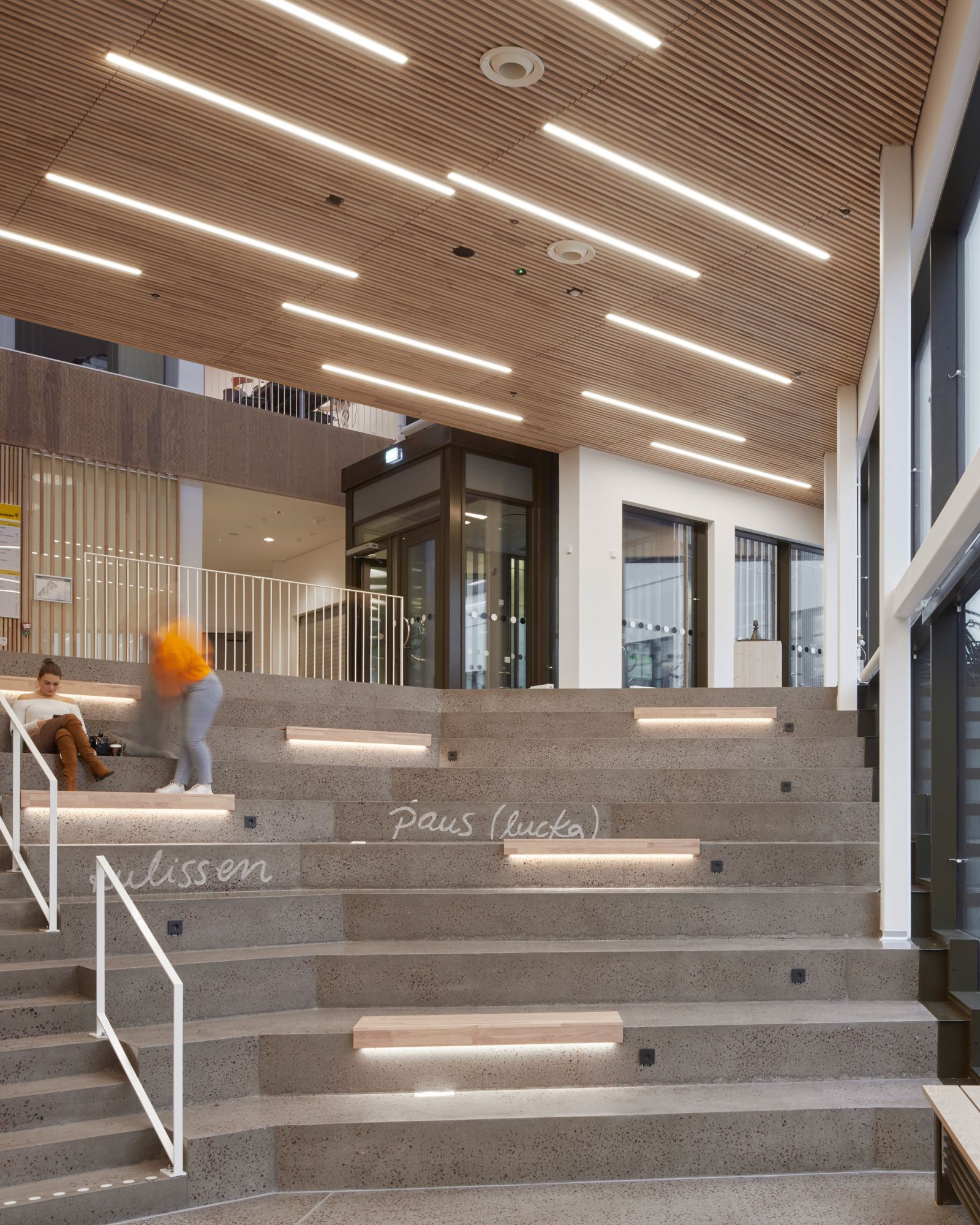
Switch to energy-efficient LED luminaires
High-quality LED lighting is energy efficient and emits a lot of light in relation to the energy consumed. Energy consumption is significantly lower, while the lifetime is longer than that of fluorescent luminaires, and by using CLO (Constant Light Output), your lighting solution can be further optimised.
The luminaires provide the same amount of light throughout their entire working life, while enabling you to save energy. With CLO, you can avoid unnecessary installation, which means less installed output and, in some cases, even fewer luminaires.
Reuse old luminaires
With the circular initiative Re:Furbish, you can renew, reuse and rebuild existing lighting solutions to meet the demands of tomorrow. Older fluorescent luminaires can be converted into energy-efficient and eco-friendly LED luminaires, which also increase both the light quality and light comfort.
Fagerhult is serving as an advisory partner throughout the project – from design proposals to product safety testing and installation.
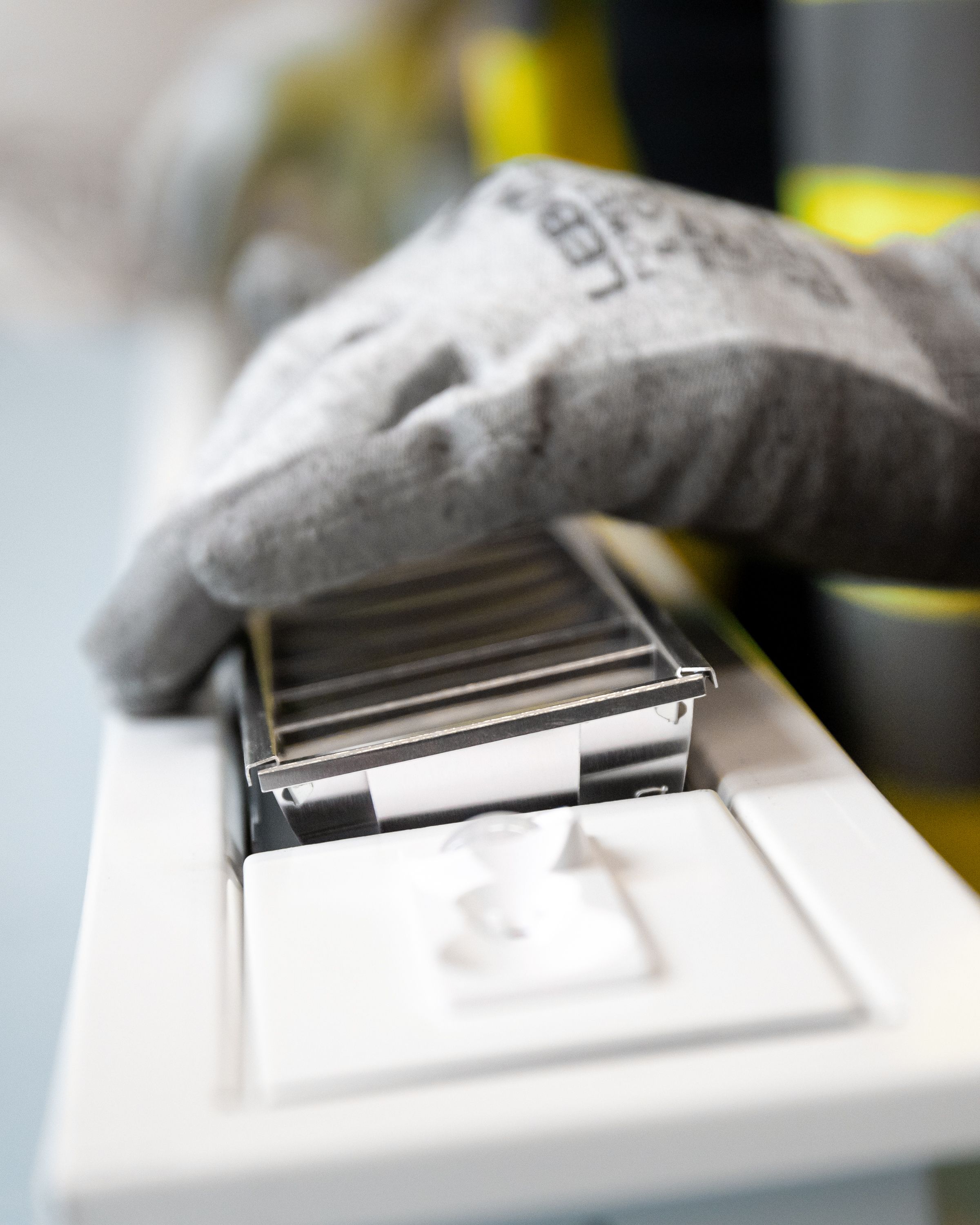
How much energy can you save?
As energy prices increase, there is a great deal of focus on switching to sustainable solutions. Switching to LED luminaires with lighting control is an investment that creates immediate benefits. Refer to our various calculation examples below to find out how much energy you can save annually.
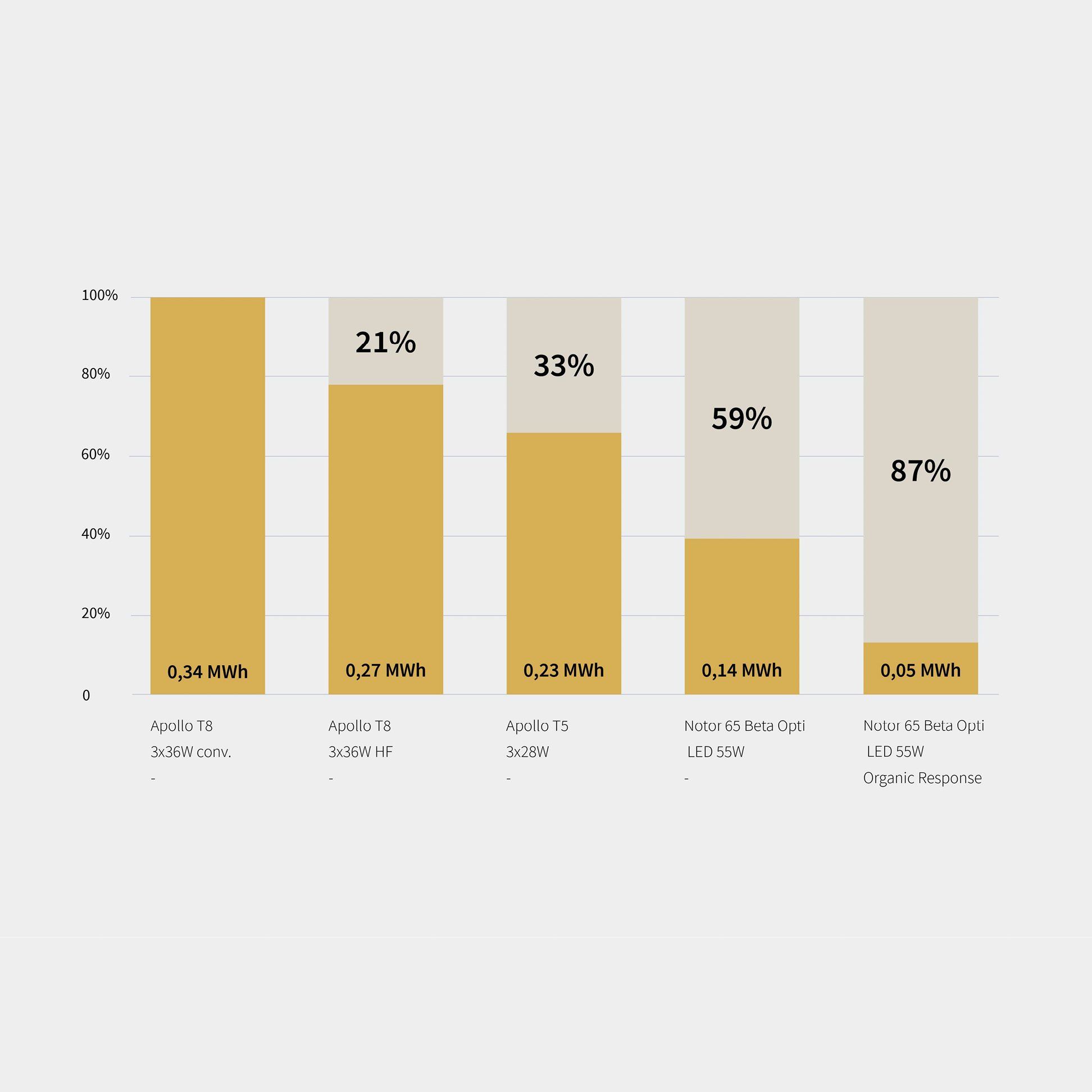
Calculation example – cell offices
Cell offices can have different dimensions and conditions, but regardless of size, a single suspended Notor 65 can meet the standard in an energy-efficient way. The visual comfort is ensured with the help of microprismatic or Beta Opti louvre shutters.
Calculation example – school
An optimal solution in slightly larger classrooms comprises nine luminaires in three rows. With DTI LED and a 50/50 solution, good lighting is created, both on and around the workspace. Combined with lighting control, LED luminaires can achieve energy savings of 77% per year compared to conventional fluorescent lamps.
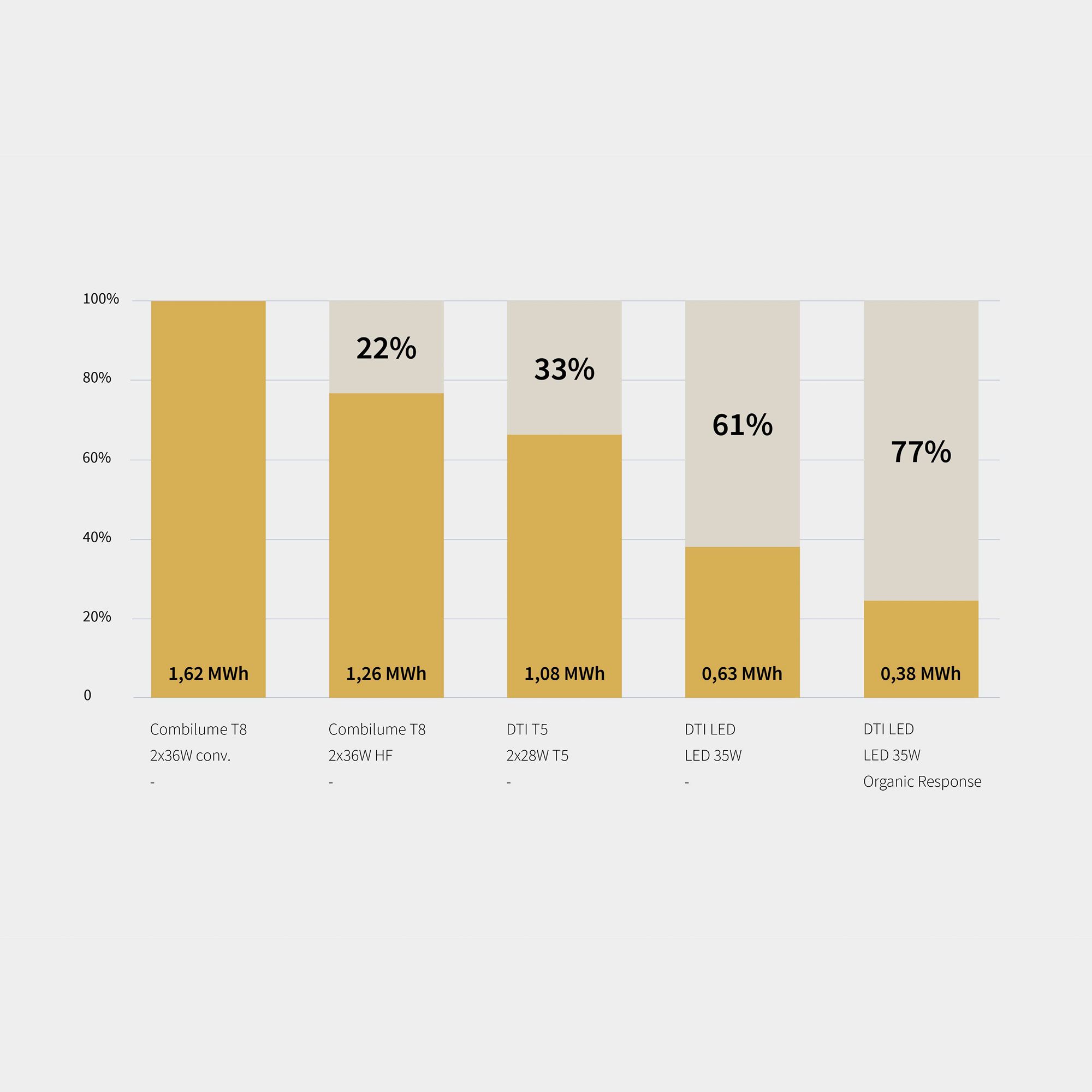
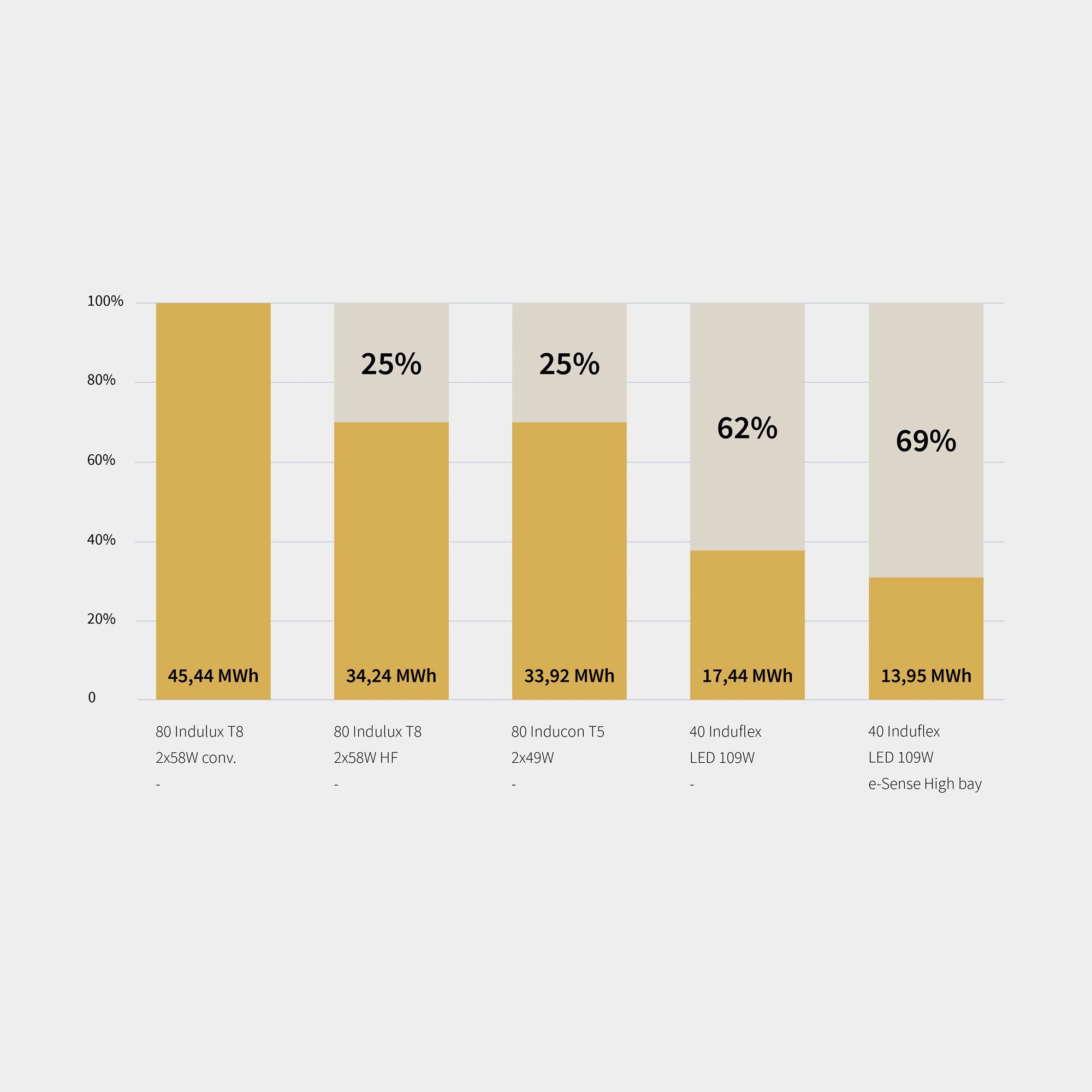
Calculation example – industry
By choosing optimised LED luminaires with fewer installation points, the energy cost is minimised, and with lighting control designed for heights, you can achieve energy savings of 69%. Induflex is a newly developed optical innovation where we have placed the lenses and louvre shutters together, which provides a well-balanced directional working light.
Calculation example – large offices
Recessed 600x600 luminaires have come a long way in their development. From 4x18 W to LED with different louvre shutter variants and powered by everything from magnetic ballast to HF. By switching to high-efficiency LEDs, the operating costs for a large office can be significantly reduced and fewer luminaires will be required. Consumption can be further reduced in combination with lighting control.
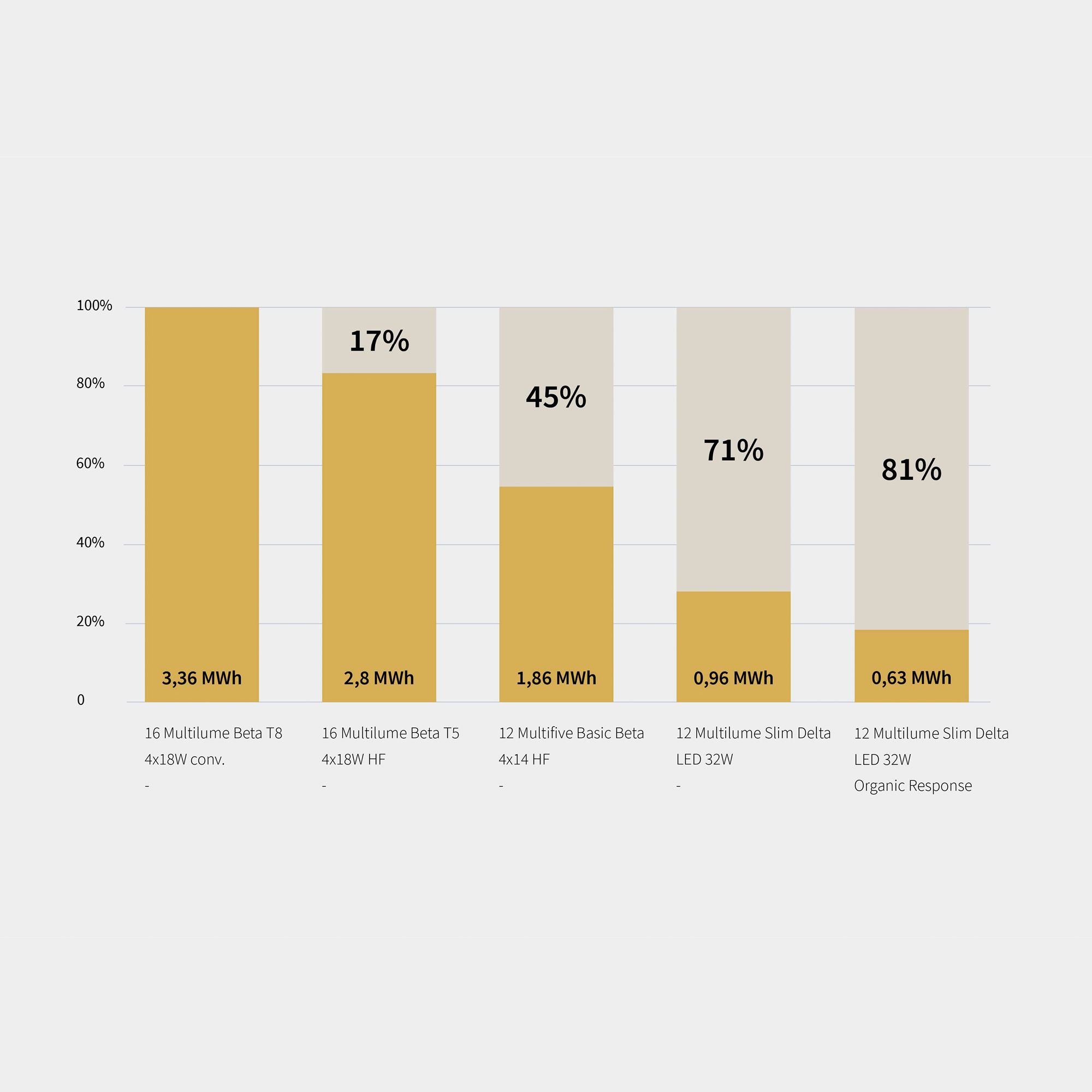
Questions & answers
Can I switch to LED tubes in my installation? Are there financial reasons for me to replace the entire installation? We provide answers here to frequently asked questions concerning the new directives.
Do you need to review your lighting solution?
Our knowledge of LED lighting and the EU directives makes it easier for you to choose the right solution. Contact us and we will help you save energy as well as reduce your environmental impact.
Contact us